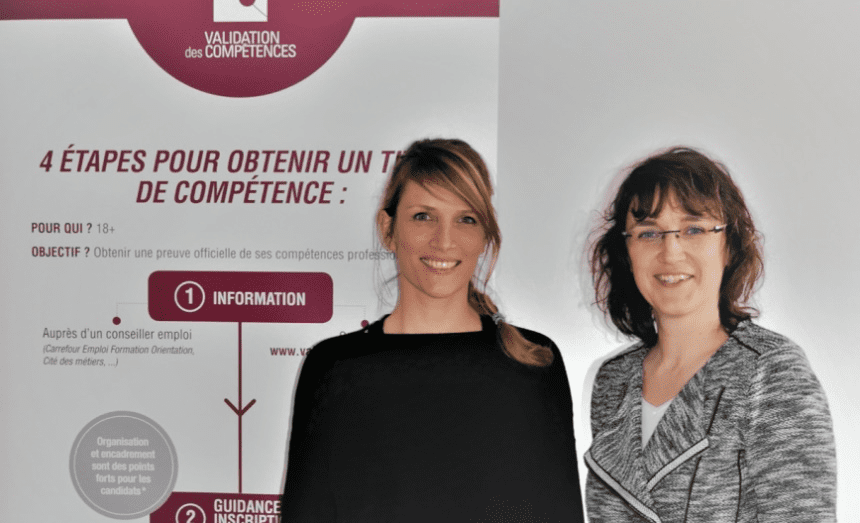How can you stimulate and promote diversity and inclusion within your company?
What is diversity and inclusion?
Diversity and inclusion are two terms that have come up a lot in recent years. But what exactly do they mean?
Diversity is the representation of a variety of profiles and identities within a company. This can take the form of gender diversity, age diversity, ethnic and cultural diversity, religious diversity... and much more.
Inclusion is the decision to create a working environment where everyone is treated equally (rights, duties, benefits, etc.) and where all employees feel they belong, regardless of their profile.
Why promote diversity and inclusion in the workplace?
Encouraging diversity and inclusion within your organisation has many benefits, both for the company and its employees.
This helps to:
How can you promote diversity and inclusion in the workplace?
Improving diversity and inclusion in the workplace requires a diversity plan, a tool for creating structural and sustainable solutions. And of course you can't do it on your own.
Beci and Actiris offer free support to employers in Brussels who want to promote diversity in their company, in terms of the way they operate, their recruitment and their internal and external communication policy.
Which diversity plan should you choose?
There are several stages involved in drawing up a diversity plan:
The mini-plan can be implemented by any company, but is particularly suited to the needs of small organisations (fewer than 50 FTEs). It can focus on themes relating to diversity and anti-discrimination, such as: prejudice against people from different backgrounds, intergenerational collaboration, the glass ceiling (higher hierarchical levels not reached by certain categories of people), recruitment and inclusion of a person with a disability. This plan can be the starting point for a more comprehensive diversity policy. At a later stage, your company may choose to adopt a broader plan.
Sectoral action:
Obligatory incorporation of at least one sectoral action (if there is an agreement with the sector).
Duration:
2 years
Financing:
5,000 euros
Diversity label:
no diversity label obtained
The Global Plan is a more comprehensive tool that offers a systematic approach. Your organisation can carry out a global analysis of its diversity and anti-discrimination policy, and initiate structural and sustainable actions in four areas: recruitment and selection, personnel policy, internal communication and external positioning. You can use this plan as a framework for your organisation's policy.
Sectoral action:
Obligatory incorporation of at least three sectoral actions (if there is an agreement with the sector).
Duration: 2 years
Financing:
Co-financing of 10,000 euros
Diversity label:
Yes
The thematic plan is a tool that enables more in-depth and innovative work and offers solutions and actions for specific challenges. It is particularly well-suited to organisations that have already produced a global or thematic diversity plan and wish to delve deeper into a specific theme in order to improve their diversity or anti-discrimination practices. To do this, an in-depth thematic analysis is carried out:
1. On a target group or a protected criterion (age, disability, gender, origin, level of training), in the areas of recruitment and selection, personnel management, internal communication or external positioning.
2. A specific area from the point of view of a target group.
Sectoral action:
Possibility of incorporating sectoral actions
Duration:
2 years
Financing:
Co-financing of 10,000 euros
Diversity label:
Yes

La validation des compétences des travailleurs
Vous voulez attirer, valoriser et fidéliser vos collaborateurs ? Faites le pari de la validation des compétences des travailleurs : un bon levier pour votre marque employeur ! Créée en

Comment aménager le lieu de travail pour les neurodivergents
20 à 30% de la population, y compris au sein d’une entreprise, serait neurodivergente, c’est-à-dire qu’elle ne serait pas dans la norme statistique du point de vue de son fonctionnement

Le passage à la retraite peut être une source de stress
La retraite, souvent considérée comme une phase positive de la vie, est perçue comme un moment de repos, de liberté et de bonheur. Cependant, cette vision idéalisée ne reflète pas

Êtes-vous « OPEN » ?
Vous êtes-vous déjà interrogé sur votre niveau d’ouverture d’esprit ? Si votre réponse est affirmative, je vous encourage à reconsidérer votre position. La perfection n’étant jamais atteignable, un soupçon de
